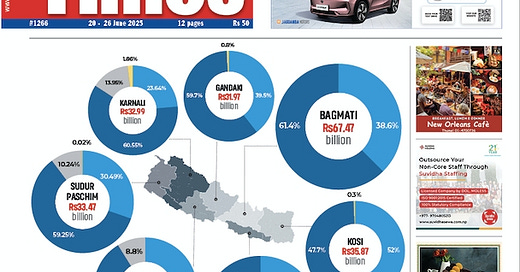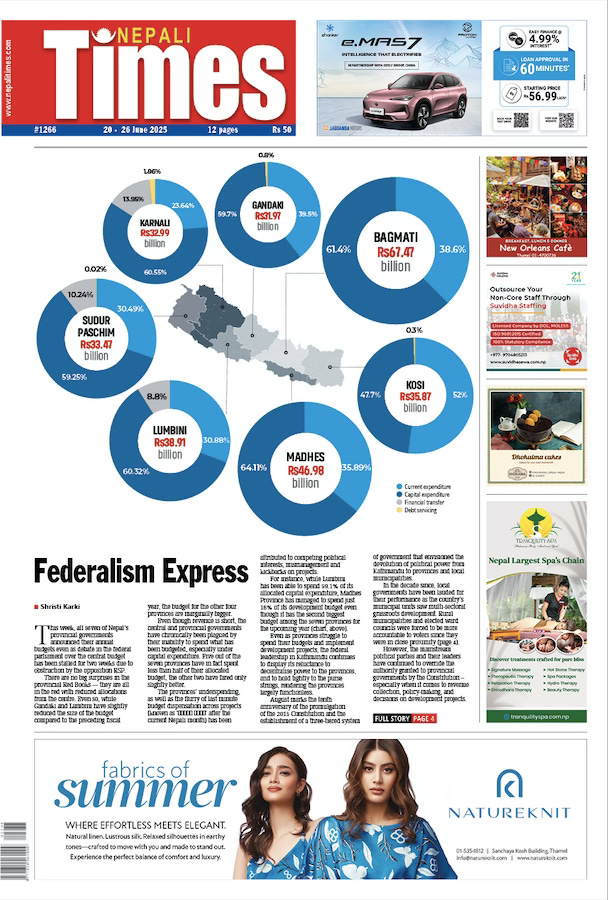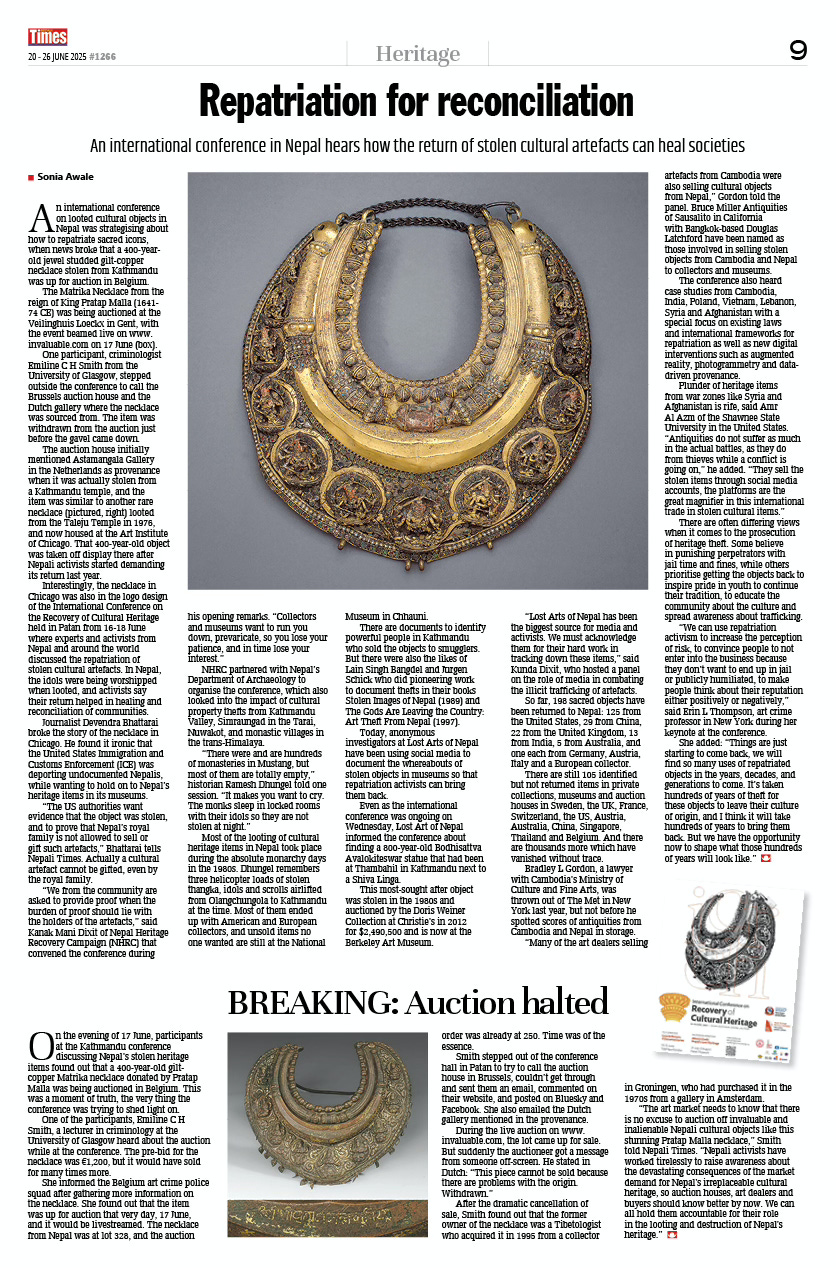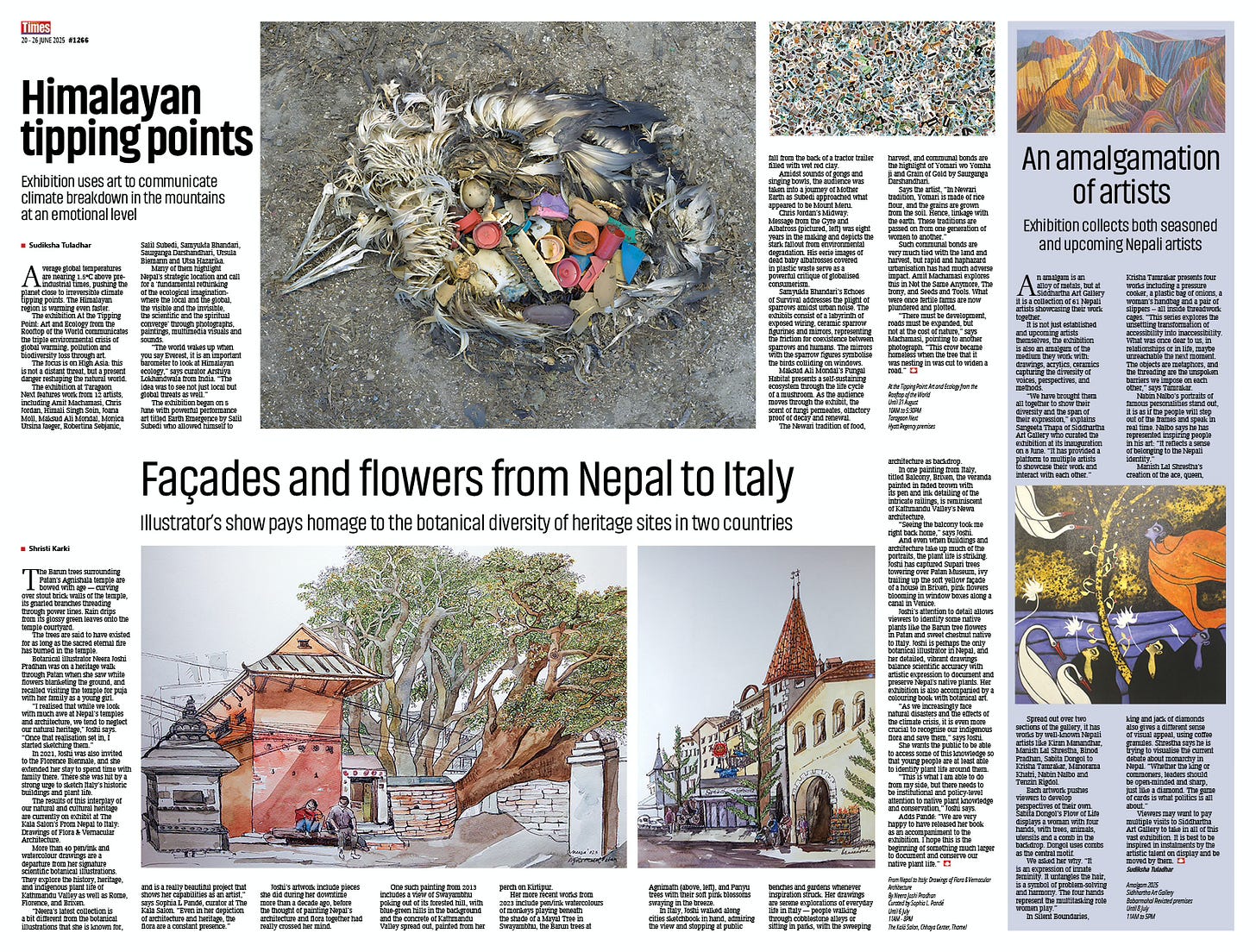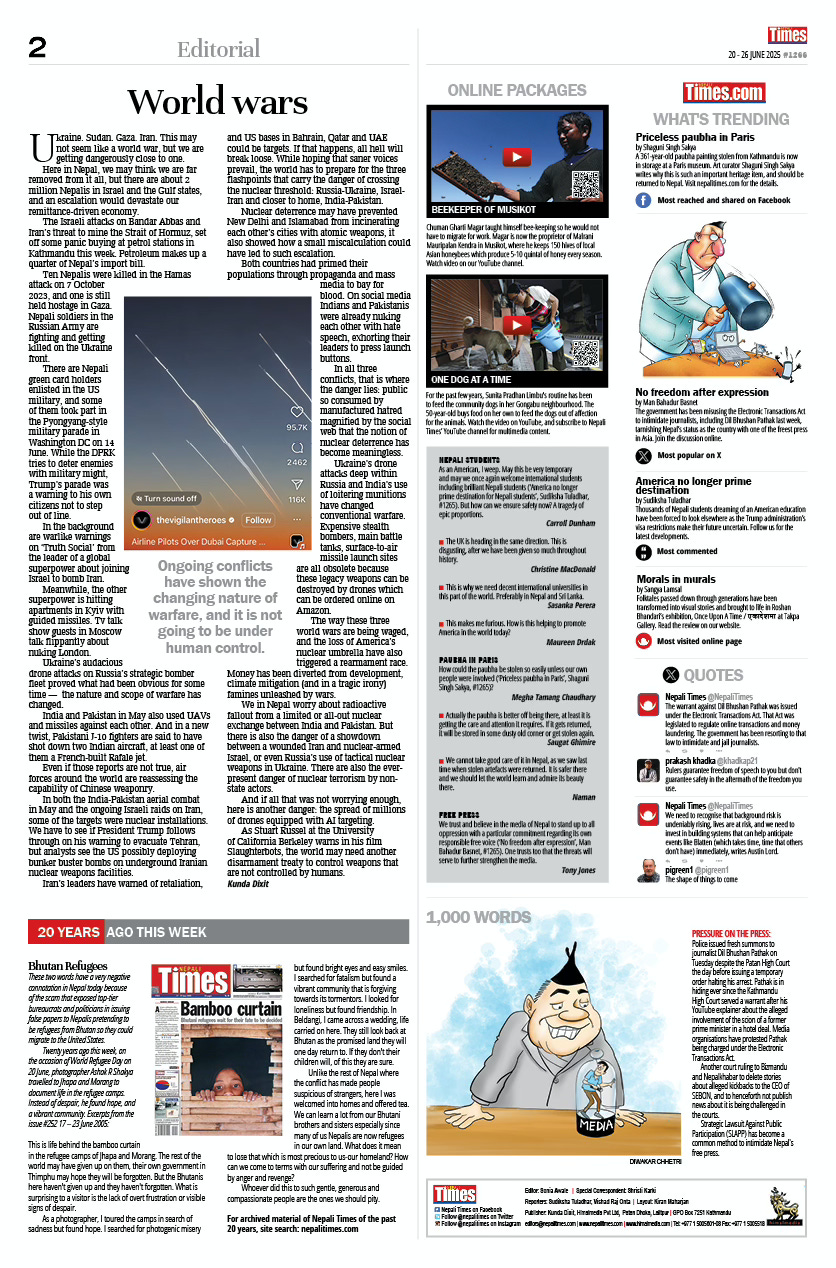Dear Readers and Non-readers of Nepali Times,
I will not be divulging anything new to you peeps if I were to mention that Nepal’s economy has survived on the trafficking of humans, the illegal trade in wildlife parts, and art theft.
And now we are entering a Golden Era of Smuggling. The price of gold has hit the roof, and this means Nepal is reaping a bonanza by allowing gold biscuits to be smuggled into India, and letting Britannia Digestive Biscuits to be smuggled into Nepal.
The Big Scandal of the Week is the Visit Visa Scam under which the Grabberment of Nepal made a rule that overseas workers could not migrate for work on tourist visas. But the Catch-22 was that they could still go if they paid the requisite fee to the relevant authoritarians from the immigration official right up to the Minister, and everyone got their share.
It looks like Homestay Ministers present and past all made a killing on these daily payoffs from Nepali workers circumventing bans on migrants travelling on visit visas, the restriction on female domestic workers flying off to Kuwait, or Indian nationals using Kathmandu airport to go to third countries without a No-Objection Certificate from their Embassy. There was so much money exchanging hands that the downstream benefits spread the wealth around with a multiplier effect on the economy.
Nepal’s alcohol industry survives on spiriting spirits into Bihar, where there is prohibition. It’s a well-oiled barter mechanism: we import petroleum from India and in exchange Nepal allows Old Smugglers to be smuggled into India. And everyone gets their share.
But this retail smuggling is too cumbersome. To streamline it, the next India-Nepal bilateral trade talks could look into using the same petroleum pipeline through which we import diesel from Raxaul to Amlekhganj by day, to send rum and vodka down to India at night. Bihar may be on the wagon, but Nepal will be on the bandwagon.
The eminent criminal Charles Shobraj once said that he could smuggle an elephant through Kathmandu airport. That is the real elephant in the room. And this was the subject of the International Conference on the Recovery of Cultural Heritage held last week in Kathmandu.
Editor Sonia Awale reports on the conference on page 9 (Repatriation for Reconciliation), and recounts the dramatic way in which participants managed to halt the auction of a 400-year-old gilt-copper necklace stolen from Nepal in the 1980s, that was about to be auctioned in Brussels while the Kathmandu meeting was going on.
The centrefold this week is about three exhibitions of contemporary Nepali art: a multimedia show at Taragaon Next with the theme of environmental protection (Himalayan Tipping Points), botanical artist Neera Joshi’s watercolours of vegetation in heritage sites of Kathmandu valley and numerous Italian cities at The Kalā Salon (Façades and Flowers from Nepal and Italy), and a mammoth exhibition by 61 contemporary Nepali artists at the Siddhartha Art Gallery (An Amalgamation of Artists).
Staying on the theme of environment, elephant biologist Sanjeeta Sharma Pokharel traces the genetic roots of The Big Bulls of Bardia on page 10-11, while Yangchen Sherpa spotlights the elusive clouded leopard (Leopards in the Clouds).
Durga Rana Magar profiles the former British Gurkha officer J P Cross, who celebrated his 100th birthday on 21 June in his adopted home in Pokhara (Pokhara’s Century Man, page 5) and Sangya Lamsal reports on the Hari Maharjan Project’s world music concert at the Sydney Opera House last week (Music without Borders, page 12).
On a more serious note, Shristi Karki tries to get to the bottom of why there is so much negativity about federalism in Nepal, and concludes that it is the central level politicians who do not want to devolve power and resources to the provinces and municipalities. There is nothing inherently wrong with federalism (Federalism Express, page 1, 4).
And I was tasked with writing the editorial this week on page 2 to look at how the recent India-Pakistan conflict, Ukraine’s drone attacks on Russian strategic air bases, and the Israel-Iran missile war have changed the nature of conflict and how all three bear the risk of nuclear escalation (World Wars).
May Peace Prevail.
Kunda Dixit

